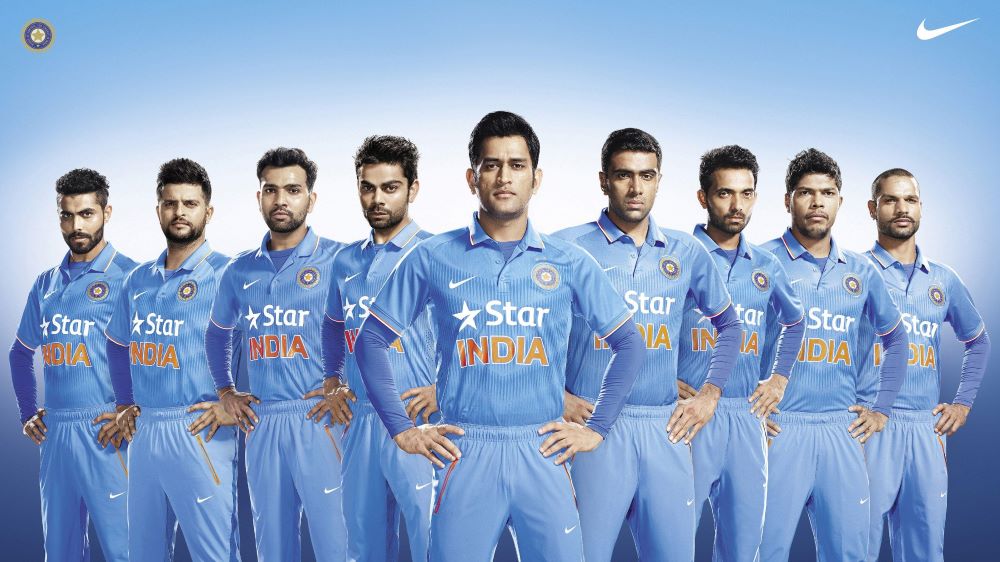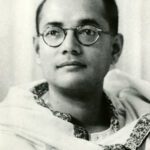In India, cricket is more than just a game; it is a sport that is admired and celebrated. Millions of Indians follow and participate in the sport, making it an integral part of their culture and identity. However, despite the sport’s enormous popularity, many people are unaware that it originated in India. Cricket, as far as we might be concerned today, was brought to India by the English during the frontier time frame. It developed over time into a popular sport among Indians of all backgrounds. The history of cricket in India, from its earliest days to its current status as a cultural phenomenon, will be the subject of this article.
Early History of Cricket
The beginnings of Indian cricket can be traced back to the 18th century, during the British colonial rule of India. It is accepted that the English carried the game to India as they considered it to be a method for keeping up with their actual wellness and for the purpose of diversion.
In 1721, a group of East India Company sailors played cricket in Cambay, Gujarat, making it the earliest known instance of the sport in India. Cricket, on the other hand, did not become more organized in India until the early 1800s.
The first cricket club in Quite a while, the Calcutta Cricket Club, was laid out in 1792 by English military faculty. The club coordinated matches between English fighters positioned in India and nearby Indian groups, principally made out of Somewhat English Indians.

The first Indian-run cricket club in India was established in 1848 by the Parsees, a Mumbai-based Zoroastrian community. In 1877, the club played its first European match.
Cricket was played in Mumbai, Kolkata, and Chennai, among other cities, by the middle of the 18th century, and it had become popular with the British elite in India. Women’s cricket didn’t become popular until much later, as the sport was mostly played by men.
Even though cricket was first played by the British in India, Indians of all backgrounds eventually took an interest in the sport, which eventually became a part of Indian culture and identity.
Evolution of Cricket in India
The fascinating story of how a sport that was first introduced by the British eventually became an integral part of Indian culture and identity is the evolution of cricket in India.
During the frontier time frame, cricket was essentially played by English military staff and authorities in India. However, the sport started to gain popularity among the elites of India over time because they saw it as a way to show off their social status and cultural sophistication.
C.K. Nayudu, widely regarded as one of India’s greatest cricketers, was one of the key figures who contributed to the popularization of cricket among Indians. Nayudu became a national hero after playing his first Test match for India in 1932 and went on to inspire generations of young Indians to take up the sport.

Lala Amarnath, who played a crucial role in India’s 1952 first-ever Test victory over England, was another influential figure. Amarnath’s success paved the way for future generations of Indian cricketers and consolidated cricket’s popularity in India.
Cricket in India continued to develop over the decades that followed, with the sport becoming more accessible to people of all backgrounds. The establishment of the Board of Control for Cricket in India (BCCI) in 1928 marked a significant turning point in the sport’s national organization.
The Indian Premier League (IPL), which debuted in 2008 and introduced limited-overs cricket in the 1970s, also changed the game. Particularly, the Indian Premier League (IPL) has contributed to the mainstreaming of cricket in India, with millions of fans tuning in to cheer on their favorite teams.
Cricket is now more than just a sport in India; It is a cultural phenomenon that has a significant impact on the nation’s psyche and sense of identity. The sport has contributed significantly to the development of modern India and helped bring people from various backgrounds together.
Cricket in Independent India
Cricket in free India has made considerable progress since the nation acquired autonomy in 1947. Cricket has developed into an essential part of Indian culture and identity over the years, and the sport has a large national following.
Cricket continued to be dominated by elites who had learned the game from their British counterparts in the early years of independent India. However, cricket’s widespread popularity in the 1950s and 1960s brought about a shift in this.

One of the vital turning points throughout the entire existence of Indian cricket was India’s very first Test triumph against Britain in 1952. The Indian team, led by Lala Amarnath, shocked the cricketing world with their performance, and the victory helped to consolidate India’s popularity in the sport.
Sunil Gavaskar, Kapil Dev, and Sachin Tendulkar emerged as national icons during the subsequent decades of Indian cricket’s expansion. Through the promotion of the sport among young Indians by local clubs and schools, the sport also became more accessible.
The establishment of the Board of Control for Cricket in India (BCCI) in 1928 marked a significant turning point in the sport’s national organization. The BCCI helped to establish a robust infrastructure for cricket in the country and played a crucial role in promoting the sport.

For Indian cricket, limited-overs cricket was introduced in the 1970s and the Indian Premier League (IPL) was established in 2008. The IPL helped to promote the sport to a global audience by bringing together the best players from all over the world.
Today, millions of Indians follow cricket, making it one of the most popular sports in the country. With numerous victories at major tournaments, the Indian cricket team is also one of the most successful teams in international cricket. Cricket has become a symbol of India’s national pride and continues to have a significant impact on Indian culture and identity today.
India At ICC World Cup
India has won the ICC Cricket World Cup three times and finished as runners-up once, making them one of the most successful teams ever. Under Kapil Dev’s leadership, the Indian team won the World Cup for the first time in 1983, defeating the formidable West Indies in the Lord’s final. Indian cricket’s popularity in the country increased as a result of the victory, which marked a significant turning point.
In 2011, India hosted the World Cup and defeated Sri Lanka in the final at the Wankhede Stadium in Mumbai. This was India’s second World Cup victory. MS Dhoni led the Indian team to victory, which sparked wild celebrations across the nation.

India’s best World Cup performance was in 2015, when they reached the semifinals but were eliminated by Australia, who went on to win the tournament. India reached the semi-finals of the tournament again in 2019, but New Zealand defeated them in a close contest.
India is always a contender to win the World Cup, despite the disappointment of recent campaigns. It is still one of the strongest teams in international cricket. Indian fans will be hoping that their team, led by Virat Kohli and made up of talented players, can improve on their World Cup record in the years to come.
India-Pakistan Cricket Rivalry
One of the most historic and intense rivalries in international cricket is that between India and Pakistan. The two teams have a long and interesting history, and the first time they played each other was in 1952.
India and Pakistan have competed against one another in numerous high-profile matches over the course of their history, including competitions at the Cricket World Cup, Asia Cup, and other international competitions. These contests draw a large global audience and are always fiercely contested.

The contention is energized by a blend of variables, including political pressures between the two nations, social contrasts, and a well established donning competition. On and off the field, the matches between India and Pakistan frequently elicit a great deal of passion, emotion, and excitement.
India and Pakistan have faced off in some of cricket history’s most memorable matches, such as the famous T20 World Cup final in 2007, in which India won in a thrilling last-ball finish.
There have been times when the two teams have displayed sportsmanship and camaraderie, despite their fierce rivalry. In 2004, Indian cricketers gave money to Pakistani earthquake victims, and in 2014, Pakistani cricketer Shahid Afridi raised money for Indian flood victims.
Overall, the cricket rivalry between India and Pakistan is still a significant part of the global cricket landscape. Matches between the two teams continue to pique the interest of cricket fans all over the world.
Indian Women’s Team
In international women’s cricket, India’s national team is the Indian women’s cricket team. The Board of Control for Cricket in India (BCCI) is in charge of the team, which has been playing international cricket since 1978.
In recent years, the Indian women’s cricket team has made significant progress and established itself as a formidable competitor in international cricket. They have won a number of major competitions, including the ICC Women’s World Twenty20 four times (in 2007, 2010, 2018, and 2020) and the ICC Women’s Cricket World Cup in 2005.

Mithali Raj, Jhulan Goswami, Smriti Mandhana, and Harmanpreet Kaur are among the Indian women’s team’s best players. Mithali Raj is widely regarded as one of the greatest female cricket players of all time. Throughout the course of her illustrious career, she has broken numerous records.
In addition, the Indian women’s team has been at the forefront of efforts to advance gender equality in cricket and has significantly encouraged young Indian girls to participate in the sport. The future of women’s cricket in India looks bright with the team’s continued success, and there is a growing sense of excitement and anticipation about what the team can accomplish in the coming years.
Conclusion
In conclusion, cricket in India has a fascinating and varied history that has developed over time to become an essential component of the nation’s culture and identity. Cricket has come a long way since its beginnings as a sport played by the British in India during the colonial era to become a national obsession that brings people from all walks of life together.
Numerous aspects of the sport have contributed to the development of modern India, including the promotion of national unity and pride and the motivation of upcoming young cricketers. Cricket has grown to become one of India’s most significant cultural exports thanks to the success of the Indian cricket team and the rise of the Indian Premier League (IPL).
In general, the growth of cricket in India is evidence of the power of sport to unite people and influence history. Indian culture and identity have been forever shaped by cricket, which will continue to have a significant impact on the country’s future for many years to come.
FAQs
What is the most famous type of cricket in India?
The Twenty20 format of cricket, which is played in the Indian Premier League (IPL), is the most popular in India.
Who is the most famous cricketer in India?
Sachin Tendulkar is regarded as a national icon and the most well-known cricketer in India.
Which Indian cricket team has won the most major tournaments?
The Indian men’s cricket team has won the ICC World Twenty20 once, twice the ICC Champions Trophy, and once the ICC Cricket World Cup. Additionally, the Indian women’s cricket team has won four ICC Women’s World Twenty20 tournaments and one ICC Women’s Cricket World Cup.
What exactly is the Indian Premier League, or IPL?
Eight franchise teams from various Indian cities compete in the professional Twenty20 cricket league known as the Indian Premier League (IPL). The IPL is generally viewed as one of the most rewarding and famous cricket associations on the planet.
What is the role of the Board of Control for Cricket in India (BCCI)?
The governing body of Indian cricket is the Board of Control for Cricket in India (BCCI), which is in charge of organizing and promoting the sport throughout the country. The Indian cricket team and the Indian Premier League (IPL) are overseen by the BCCI, among other things.







